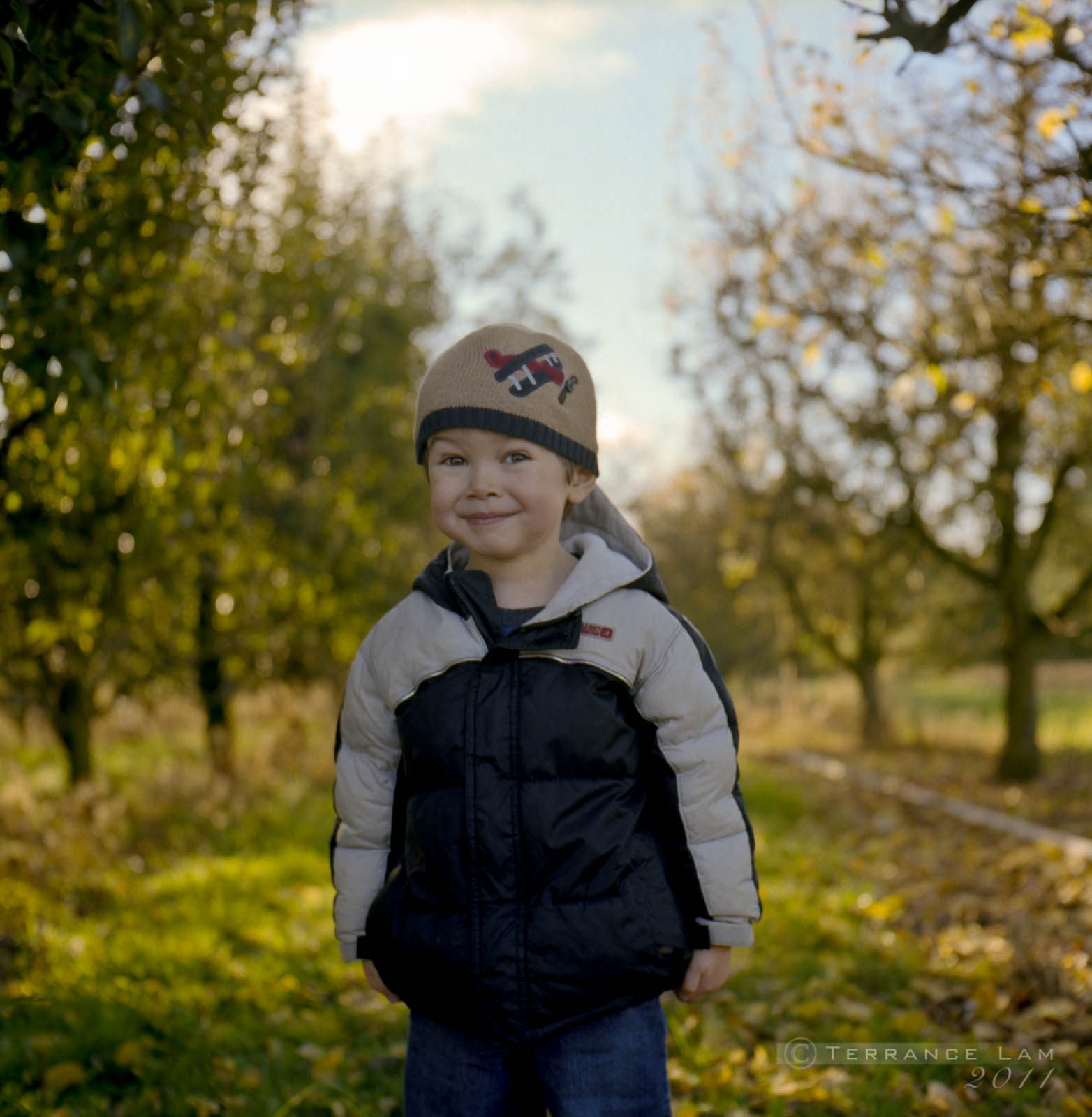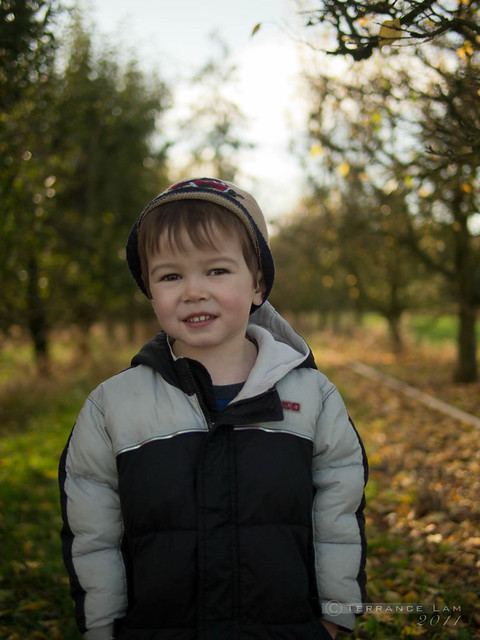Medium Format Film vs Micro Four Thirds Digital
 |
| Yashica Mat -245 Twin Lens Reflex, 6x6 camera, 80mm F/3.5 lens on Kodak New Portra 400 |
First off, the images have been touched up to match the white balance. With film, you generally buy the type of film that suits the lighting conditions or use filters to adjust for colour temperatures. Digital camera certainly have the advantage of adjusting for that, or to match a custom colour just by dialing it in. Certainly advantage goes to digital for this alone.
Next, my subject (my son) was shot looking slightly different. To be expected from my 3 year old son who has a hard time keeping still. I tried to shoot similar settings, but I forgot to change the Pen to ISO 400 when I shot with that.
 |
| Olympus Pen E-P3, Leica 25mm F/1.4 lens |
Too keep this simple, I'm just going to put into point form the advantages and disadvantages of each one.
Medium Format
Advantages:
- Easier to isolate subject from background
- More resolution and detail
- Superior dynamic range (more shadow and highlight details)
- Larger potential for larger prints
- Inexpensive bodies
- Forgiving for exposure errors (at least with the film type I used)
- Bright and easy to use viewfinder
- Slow to focus and requires a good amount of skill to use
- Expensive to process and slow to get results
- Heavy and not so compact (although the TLR is very compact in this regards
- Limited metering options (on the older equipment)
- Tricky to scan negatives (however Portra is one of the easiest and best films I've used to scan)
- Limited amount of frames to shoot (in my case 12)
- Limited shutter speeds (at least with the older cameras)
- Very expensive bodies if you want to have basic features found in modern SLR cameras
Micro Four Thirds
Advantages:
- Compact and very lightweight design - almost pocketable - no so much with the lens I was using in this comparison
- Being digital, allows for lots of shots (and instant delete if needed)
- Instant review
- Low Noise performance
- Faster Shutter Speeds
- Built in flash
- Flexible dynamic range (being able to control where you want emphasis on the dynamic range to compensate for shadow or highlight details)
- Autofocus
- Multiple metering modes
Disadvantages:
- Resolution is limited to 12x13 prints for maximum quality
- Expensive lenses to get maximum depth of field control
- No optical viewfinder
- Price bodies
At the end of the day, both were fun to use and both are great to use. I love both formats, and it comes down to why and when to use them. Medium format in my case is limited by the equipment I have and more modern version improve upon the experience. However, of all the medium format systems I'm using, the TLR is the most compact of all of them (however the most antiquated - certainly wished there was an affordable digital version). Modern medium format is very large and bulky, even my Mamiya SLR 645 is rather heavy and the popular 647 systems are even heavier. What I really like doing is bringing these two together, but to be honest, it's all about what your'e hoping to achieve. Right smack in the middle of all of this is my 5DMark2 which as a 35mm full frame and sits right in the middle of the road of both of these formats. To me it still is the best between the two and frankly the ultimate in quality.
I've spent a lot of time in the past couple of months shooting film, which is a lovely return to where I started, but at the end of the day, I appreciate my 5Dmk2 even more because I get very similar quality and resolution that I get off my medium format equipment. I will continue to rediscover and love medium format, but at the end of the day, the tools I use, will always dictate the client's needs and desires. I would love to be shooting medium format every day, but it's just not feasible for me at this stage, but looking forward to the days when it will make more sense.
One last thing. Kodak Portra 400 which is what I used to take this image is a fantastic medium to work with. It's extremely forgiving in exposure, and very easy to scan. I can certainly add that in my experiences between the half dozen film types I've tried, is the least frustrating to scan. Which brings to light another thing. Unless you want to spend a lot of time scanning (with a chance of never getting great scans) or having them scanned professionally at an enormous cost, it's something that you need to really consider if you're going to shoot this format and put it into a digital format later. Currently it's my favourite film, and although I can't get my hands on them yet, looking forward to the New Portra 160 to use for landscape photography.
Comments
Post a Comment